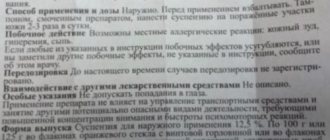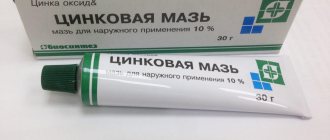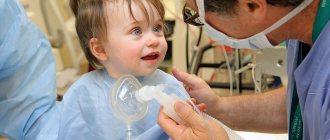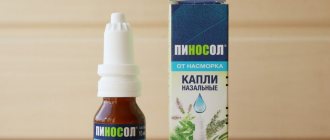Compound
The active substance is haloperidol .
The tablets contain 1.5 or 5 mg of this substance. Additional elements are: talc, potato starch, gelatin, magnesium stearate, lactose monohydrate.
1 ml of solution contains 5 mg of active substance. Additional substances are: injection water, lactic acid, methylparaben, propylparaben.
Drops from the company Ratiopharm contain 2 mg of active substance per 1 ml. Additional substances are: methyl parahydroxybenzoate, purified water, propyl parahydroxybenzoate, lactic acid.
Pharmacodynamics and pharmacokinetics
The active component is a butyrophenone derivative. Blocks dopamine, postsynaptic receptors in the mesocortical, mesolimbic structures of the brain, has a pronounced antipsychotic effect. Despite its high antipsychotic activity , the drug combines moderate sedative and antiemetic effects. It does not have an anticholinergic effect, but causes extrapyramidal disorders. The sedative effect is due to the blockade of alpha-adrenergic receptors in the reticular pharmacy.
The antiemetic effect is achieved by blocking the vomiting center in the trigger zone. When dopamine receptors are blocked in the hypothalamus, galactorrhea and hypothermic effects appear. With long-term therapy, a change in endocrine status occurs, the production of gonadotropic hormones decreases and the synthesis of prolactin due to the effect on the anterior lobe. The drug eliminates persistent personality changes, mania, hallucinations, delusions, and increases the patient’s interest in the world around him.
Haloperidol is prescribed to patients who have developed resistance to other antipsychotic medications. The drug has an activating effect on patients.
In hyperactive children, Haloperidol can eliminate behavioral disorders and excessive motor activity.
Haloperidol decanoate has a longer duration of action compared to haloperidol.
The therapeutic effect of prolonged forms of the drug lasts up to 6 weeks.
The maximum concentration after using the solution is observed after 10-20 minutes, when using tablets - after 3-6 hours. The solution and tablets are excreted in urine and feces in a ratio of 2:3. Drops are excreted in bile (15%) and urine (40%).
Drug addiction
When used correctly in normal doses, this medicine is not addictive. But in rare cases of an independent increase in the amount of the incoming substance, withdrawal syndrome appears after refusing it. With abrupt withdrawal of the drug, or long-term use of Haloperidol, mental, neurological and other disorders may occur.
They usually develop in the first days after discontinuation or reduction of dosage, and disappear after 3-4 days. And some changes persist for a month. This reaction is explained by the specific effect of the antipsychotic on neural connections. Its use leads to the relief of excitement, and when “Haloperidol” stops entering the body, dopamine receptors are activated. There is an effect of a sharp release of the substance after previous inhibition. After which you have to resort to symptomatic therapy and carry out rehabilitation.
Signs of withdrawal
Withdrawal syndrome most often develops in people taking typical antipsychotics, which include Haloperidol. This manifests itself in the leveling of all previous effects of the drug. A person develops:
- stress, anxiety
- aggressiveness and irritability
- worsening mental pathology
- severe psychosis (called “hypersensitivity psychosis”)
- tremors, muscle spasms, convulsions, trembling of the whole body
- insomnia
In some cases, dependence on Haloperidol manifests itself in atypical disorders. They are determined by the individual characteristics of the body. A person complains of headache, nausea, indigestion, severe fatigue, and sweating.
Giving help
To prevent withdrawal syndrome after taking Haloperidol, experts recommend not stopping treatment at once. In order to restore the sensitivity of dopamine and other receptors, some time and a gradual reduction in dosage are required. If, for some reason, the antipsychotic has to be discontinued immediately, then in this case it should be replaced with another drug of similar action. An antidepressant, tranquilizer, or nootropic may be suitable as an auxiliary drug.
Symptomatic treatment consists of the use of beta blockers, which help restore the functioning of the heart and blood vessels. To get rid of extrapyramidal disorders, it is recommended to use anticholinergics. And neurological abnormalities and mental manifestations are treated with tranquilizers.
If complex therapy is not effective, the doctor may decide to start taking Haloperidol again until the patient’s condition stabilizes. And after some time, try again to stop the drug by very slowly reducing the dosage. At the same time, constant monitoring of the patient and corrective therapy are necessary.
Indications for use of Haloperidol
Indications for use are as follows. The drug is prescribed for hallucinations , delusions, acute psychosis, paranoid states , psychomotor agitation, “steroid” psychosis, alcoholic and drug psychosis, agitated depression, mental retardation, Tourette’s disease , psychoses of various origins, Huntington’s chorea , psychosomatic disorders, stuttering, childhood autism , hyperactivity in children.
"Haloperidol" in the practice of a narcologist
The use of Haloperidol is possible not only for mental disorders. It is used by practicing narcologists to correct behavior in people trying to recover from drug addiction and alcoholism. Indications for prescribing the drug are the following conditions:
- endogenous and pharmacogenic psychosis
- pronounced agitation that does not respond to tranquilizers
- severe depression of mood, apathy
- psychosis due to withdrawal symptoms
- inappropriate behavior when abusing illegal substances
In alcoholics, Haloperidol helps relieve symptoms of delirium. It relieves hallucinosis, paranoia, delirium and other severe mental disorders well. The drug allows you to eliminate acute manifestations of psychosis in drug addicts.
Contraindications
The medicine is not used for severe depression of the central nervous system, for intolerance to the active substance, for central nervous system pathology, which is accompanied by extrapyramidal and pyramidal symptoms, for breastfeeding , hysteria, depression, Parkinson's disease, during pregnancy, for children under three years of age. In case of impaired intracardiac conduction, with angina pectoris, prolongation of the QT interval, with angle-closure glaucoma, with hypokalemia, decompensated heart disease, with epilepsy, thyrotoxicosis, kidney and liver pathology, with respiratory and pulmonary heart failure, with alcoholism, prostatic hyperplasia with urinary retention , in acute infectious diseases, in COPD, Haloperidol is used with caution.
The most frequently asked questions about haloperidol
What happens if a healthy person takes haloperidol?
NOTHING! If a person is truly healthy, then he should not feel any changes. Haloperidol (like any other antipsychotic) has no effect on healthy people.
How long can you be treated with haloperidol?
The duration of haloperidol administration is determined by the attending physician. It can be just one dose (for vomiting, acute psychosis, overexcitation). For chronic diseases, taking haloperidol can last for years (for some types of schizophrenia - for life).
Can I prescribe haloperidol to myself?
It is forbidden. Only a doctor should prescribe any medicine. Haloperidol is sold in pharmacies only by prescription.
Does haloperidol often cause side effects?
Yes. In order to avoid side effects, the doctor must accurately determine the indications and contraindications, correctly calculate the dose and method of administration that is effective and safe from the point of view of side effects. To avoid the side effects of haloperidol associated with changes in muscle tone, so-called “correctors” are used: trihexyphenidyl, biperiden, amantadine and others.
Is haloperidol harmful?
When prescribed by a doctor, haloperidol is not harmful. When self-medicated, taking haloperidol can have a toxic effect on the body.
Is haloperidol helpful?
Yes. The benefits of haloperidol include relieving painful symptoms of psychosis, hallucinations, hyperkinesis (movement disorders), and stopping vomiting.
Side effects of Haloperidol
Nervous system: drowsiness, headaches, agitation, anxiety, akathisia , fears, restlessness, exacerbation of hallucinations, psychoses, lethargy, depression or euphoria , epileptic seizures, tardive dyskinesia, with long-term therapy extrapyramidal disorders are noted, tardive dystonia (eyelid spasms, frequent blinking , uncontrolled movements of the arms, legs, torso, neck), neuroleptic malignant syndrome (loss of consciousness, urinary incontinence, rapid or difficult breathing, increased sweating, instability of blood pressure, arrhythmia, tachycardia , hyperthermia, epileptic seizures, muscle rigidity).
Cardiovascular system: signs of ventricular fibrillation and flutter on the ECG, tachycardia, arrhythmia, orthostatic hypotension , drop in blood pressure.
Digestive system: constipation , dry mouth, decreased appetite, hyposalivation, diarrhea, nausea, vomiting, liver dysfunction.
Hematopoietic organs: tendency to monocytosis, erythropenia, agranulocytosis, leukocytosis, leukopenia - are temporary.
Genitourinary system: priapism, increased libido or decreased potency, menstrual irregularities in females, hyperprolactinemia , gynecomastia , pain in the mammary glands, peripheral edema; with prostatic hyperplasia, urinary retention is noted.
The following side effects are also possible: allergic reactions, photosensitivity , laryngospasm, bronchospasm, maculopapular changes in the skin, blurred vision, retinopathy, cataracts, hyponatremia, hypoglycemia, weight gain, alopecia.
Special instructions for the use of the drug Haloperidol
While taking haloperidol, the ability to concentrate may decrease, which should be taken into account when driving or performing work that requires increased attention. Use with caution in patients with severe diseases of the cardiovascular system (possible development of arterial hypotension). Due to the possibility of developing paradoxical reactions, haloperidol is prescribed with extreme caution to elderly patients. While taking haloperidol, drinking alcohol is prohibited.
Instructions for use of Haloperidol (Method and dosage)
Haloperidol tablets, instructions for use
Take orally with a full glass of milk and water. The initial dosage is 0.5-5 mg three times a day. No more than 100 mg per day. The duration of therapy is 2-3 months. The drug is discontinued gradually, the dosage is reduced slowly, and maintenance doses are switched to - 5-10 mg per day.
Tourette's disease, non-psychotic behavioral disorders: 2-3 times a day 0.05 mg/kg/day, with a gradual increase in dose by 0.5 mg once a week to a maximum of 0.075 mg/kg/day.
Using the solution
The average single dosage for intramuscular administration of Haloperidol is 2-5 mg, the interval between injections is 48 hours. Acute alcoholic psychosis: intravenously 5-10 mg.
Instructions for Haloperidol Ratiopharm drops
Typically consumed up to three times a day with food.
Adults are usually prescribed 0.5-1.5 mg 3 times a day. Further, the dose of the drug can be increased to an average of 10-15 mg per day. For acute symptoms, it is allowed to take 15 mg per day or more. The maximum dose is 100 mg per day.
The initial dose for children from three years of age is 0.025-0.05 mg per kg of body weight, taken 3 times. The maximum can be increased to 0.2 mg per kg of body weight.
About Haloperidol
International name:
Haloperidol Synonyms: Halofen, Aloperidin, Haldol, Halidol, Haloperidin, Haloperin, Halophen, Halopidol, Serenace, Seranase, Haloper, Novo Peridol, Senorm
Group affiliation:
Neuroleptic (antipsychotic)
Description of the active substance (INN): 4- (para Chlorophenyl) - 1 [3′- (para-fluorobenzoyl)-propyl]-piperidinol-4, or 4-[4-(para-chlorophenyl)-4-hydroxypiperidino] -4 ′-fluorobutyrophenone.
Dosage form: tablets for oral administration, 0.0005 g; 0.001 g; 0.0015 g; 0.002 g; 0.0025 g; 0.005 g and 0.01; injection solution 0.5%; oral solution in the form of drops containing 0.002 g of active substance in 1 ml (10 drops contain 1 mg of haloperidol); a solution of haloperidol decanoate, the injection of which provides a therapeutic effect lasting about 4 weeks.
Pharmachologic effect:
Antipsychotic drug (neuroleptic), butyrophenone derivative. Due to the blockade of depolarization or reduction of the degree of excitation of dopamine neurons and blockade of postsynaptic dopamine D2 receptors in the mesolimbic and mesocortical structures of the brain, it has a pronounced antipsychotic effect.
Due to the blockade of α-adrenergic receptors of the reticular formation of the brain stem, it has a moderate sedative effect. Thus, it eliminates delusions, manic states, hallucinations, and persistent personality changes. It also has a pronounced antiemetic effect (due to the blockade of dopamine D2 receptors in the trigger zone of the vomiting center). Affects autonomic functions (reduces the tone of hollow organs, motility and secretion of the gastrointestinal tract, eliminates vascular spasms) in diseases accompanied by agitation, anxiety, and fear of death. Effective in patients resistant to other antipsychotics. Unlike aminazine, it does not cause lethargy and apathy in patients; on the contrary, it has an activating effect. In hyperactive children, it eliminates excessive motor activity and behavioral disorders (impulsivity, aggressiveness, difficulty concentrating).
Indications:
Acute and chronic psychotic disorders (including schizophrenia, manic-depressive, epileptic, alcoholic psychoses), psychomotor agitation of various origins (mania, dementia, mental retardation, schizophrenia, chronic alcoholism), delusions and hallucinations (paranoid states, acute psychosis ), mental retardation, agitated depression, Tourette's disease, Gettington's chorea, behavioral disorders in children (including hyperreactivity and childhood autism) and the elderly, stuttering, psychosomatic disorders.
Also used for indomitable vomiting (including during chemotherapy for the prevention and treatment of nausea and vomiting), long-lasting and treatment-resistant hiccups.
In small doses (up to 10 mg) it is indicated in the treatment of reactive conditions and neuroses.
In the case of alcoholic delirium with visual hallucinations, under the influence of haloperidol, psychomotor agitation quickly decreases and hallucinations disappear.
Can be used in combination with sleeping pills, analgesics and other neurotropic drugs in preparation for operations.
It is also known that haloperidol is effective for relieving pain, agitation, nausea and vomiting in acute coronary insufficiency (usually together with analgesics).
Contraindications:
Hypersensitivity to the drug (including other butyrophenone derivatives, sesame oil), for intramuscular and intravenous injections - children under 3 years of age, diseases of the central nervous system accompanied by pyramidal and extrapyramidal symptoms (including Parkinson's disease), depression , comas of various origins, hysteria, severe depression of central nervous system function due to intoxication with xenobiotics.
Haloperidol is strictly contraindicated during pregnancy and breastfeeding. The toxic effect on the fetus and disruption of its development have been experimentally proven. It has also been established that haloperidol is excreted in breast milk (in this case, a sedative effect and impaired motor functions are detected in a child during breastfeeding).
In case of development of tardive dyskinesia (the occurrence of such phenomena as protruding the tongue, smacking lips, puffing out the cheeks, sucking, chewing, swallowing movements, grimacing, breathing problems, rolling eyes, obsessive stereotypical movements of the limbs, head), it is necessary to gradually reduce the dose of haloperidol and prescribe another a drug.
Haloperidol is prescribed with great caution for diseases of the cardiovascular system with symptoms of decompensation, conduction disorders of the heart muscle (including angina, prolongation of the QT interval on the ECG or a predisposition to this, hypokalemia, simultaneous use of other drugs that can cause prolongation of the interval QT) and kidney function.
Haloperidol is used to a limited extent for epilepsy, liver and/or renal failure, thyrotoxicosis, pulmonary-cardiac and respiratory failure (including chronic obstructive pulmonary disease and acute infectious diseases), prostatic hyperplasia with urinary retention, alcoholism, and closed-angle glaucoma.
There are reports of the possibility of the appearance of symptoms of diabetes insipidus during haloperidol therapy, and a tendency (with long-term treatment) to the development of lymphomonocytosis.
Elderly patients usually require a lower initial dose and a more gradual dose titration due to the high likelihood of developing extrapyramidal disorders. Careful monitoring of the patient is important. During treatment with haloperidol, it is necessary to stop drinking alcohol, and you should also refrain from engaging in potentially hazardous activities that require increased attention and high speed of psychomotor reactions (including driving vehicles).
Side effects:
From the side of the central nervous system: headache, insomnia or drowsiness (especially at the beginning of treatment), a state of restlessness, anxiety, fear, excitement, euphoria or depression, restlessness, epileptic attacks, paradoxical reaction (exacerbation of psychosis, hallucinations). With long-term treatment, extrapyramidal disorders may appear: tardive dyskinesia (smacking and wrinkling of lips, puffing out of cheeks, rapid and worm-like movements of the tongue, uncontrolled chewing movements, uncontrolled movements of the limbs); tardive dystonia (frequent blinking, eyelid spasms, unusual facial expressions, grimacing, unusual body position, uncontrolled bending movements of the neck, torso, arms and legs); neuroleptic malignant syndrome (difficulty or rapid breathing, rapid heartbeat, heart rhythm disturbances, fever, increased or decreased blood pressure, increased sweating, urinary incontinence, muscle rigidity, epileptic seizures, loss of consciousness).
From the cardiovascular system: when using high doses - decreased blood pressure, orthostatic hypotension, heart rhythm disturbances, increased heart rate, ECG changes (prolongation of the QT interval, signs of ventricular flutter and fibrillation).
From the gastrointestinal tract: when using high doses - dry mouth, difficulty salivating, loss of appetite, nausea, vomiting, constipation or diarrhea, impaired liver function up to jaundice.
From the endocrine system: gynecomastia, pain in the mammary glands, increased levels of prolactin in the blood, menstrual irregularities, decreased potency, increased libido, priapism.
From the genitourinary system: urinary retention (with prostatic hyperplasia), peripheral edema.
Metabolism: increased or decreased blood glucose levels, decreased sodium levels in the blood, sweating, increased body weight.
From the hematopoietic system: rarely - mild and temporary leukopenia, leukocytosis, agranulocytosis, slight erythropenia, tendency to monocytosis.
On the part of the visual organs: cataracts, retinopathy, blurred vision, accommodation disturbances.
Allergic reactions: rarely - skin rash, spasm of the bronchi, larynx. Dermatological reactions: maculopapular and acne-like skin changes; rarely - photosensitivity, alopecia.
Overdose:
Symptoms: severe extrapyramidal disorders (tardive dyskinesia, tardive dystonia, neuroleptic syndrome), drop in blood pressure, drowsiness, lethargy, in severe cases - coma, respiratory depression, shock. Treatment: there is no specific antidote. In case of overdose caused by oral administration of the drug, it is necessary to perform gastric lavage, followed by the administration of activated carbon. In case of respiratory depression - carrying out measures for artificial ventilation of the lungs, with a pronounced decrease in blood pressure - the introduction of plasma-substituting fluids, plasma, norepinephrine (but not adrenaline!), to reduce the severity of extrapyramidal disorders - central anticholinergic blockers and antiparkinsonian drugs.
Directions for use and dosage:
Haloperidol is taken orally, during or after meals, with a full (240 ml) glass of water or milk, the initial dose for adults is 0.5-5 mg 2-3 times a day. If necessary, the dose is gradually increased until the desired therapeutic effect is achieved (on average - up to 10-15 mg, in chronic forms of schizophrenia - up to 20-60 mg). The maximum dose is 100 mg/day. Duration of treatment is 2-3 months. Reduce the dose slowly, maintenance doses are 5-10 mg/day. Elderly or weakened patients at the beginning of treatment are prescribed orally, 0.5-2 mg 2-3 times a day. Children 3-12 years old (or weighing 15-40 kg) with psychotic disorders - orally, 0.05 mg/kg/day in 2-3 divided doses; if necessary, taking into account tolerability, the dose is increased by 0.5 mg 1 time over 5-7 days to a total dose of 0.15 mg/kg/day. For non-psychotic behavioral disorders, Tourette's disease - orally, initially 0.05 mg/kg/day in 2-3 divided doses, then the dose is increased by 0.5 mg once every 5-7 days to 0.075 mg/kg/day. For childhood autism - orally, 0.025-0.05 mg/kg/day. If there is no effect within 1 month. It is not recommended to continue treatment.
Haloperidol drops are taken with meals, dosed with a teaspoon, added to drinks or food, or on a lump of sugar (except for diabetics).
At the beginning of treatment, adults and adolescents usually take 0.5-1.5 mg of haloperidol 2-3 times a day (initial daily dose 0.5-5 mg). Then the dose is gradually increased by 0.5-2 mg per day (in resistant cases by 2-4 mg per day) until the required therapeutic effect is achieved. When relieving acute symptoms in a hospital setting, the initial daily dose may be increased to 15 mg of haloperidol, and higher in therapeutically resistant cases.
On average, the therapeutic dose is usually 10-15 mg/day, in chronic forms of schizophrenia - 20-40 mg/day, in resistant cases - up to 50-60 mg/day. Maintenance doses (outside exacerbations) in outpatient settings can range from 0.5 to 5.0 mg/day.
In acute conditions and in cases where oral administration is not possible, intramuscular or intravenous injections are used. For “uncontrollable” vomiting - 1.5-2 mg 2 times a day. The average single dose for intramuscular administration is 2-5 mg, the interval between injections is 4-8 hours. For acute psychoses - 5-10 mg intravenously or intramuscularly. The indicated dose can be re-administered 1-2 times at intervals of 30-40 minutes until the desired effect is obtained. The maximum daily dose is 100 mg. For acute alcoholic psychosis - 5-10 mg intravenously; if ineffective, an additional infusion of 10-20 mg is performed at a rate of no more than 10 mg/min. An injection solution containing haloperidol decanoate, strictly intramuscularly, 25 mg every 15-30 days, if necessary, the dose can be increased to 100-150 mg (the interval between doses and the dose are adjusted at intervals of at least 1 month).
Doses for children of 6 mg/day were noted to cause additional improvement in behavioral disorders and tics.
Special instructions:
During therapy, patients should regularly monitor ECG, blood tests, and liver tests. Intramuscular and intravenous administration of haloperidol should be carried out under the close supervision of a physician (especially in elderly patients and children); when a therapeutic effect is achieved, it should be switched to oral administration. With the development of tardive dyskinesia, a gradual dose reduction is recommended (up to complete discontinuation of the drug). Caution must be exercised when performing heavy physical work or taking a hot bath (heat stroke may develop due to suppression of central and peripheral thermoregulation in the hypothalamus). Exposed skin should be protected from excess solar radiation due to the increased risk of photosensitivity.
During treatment, you should not take “anti-cold” over-the-counter drugs (anticholinergic effects and the risk of heat stroke may increase).
Treatment is stopped gradually to avoid the occurrence of the syndrome of “perversion” of the pressor effect of epinephrine, and as a result of this, the development of severe arterial hypotension and tachycardia.
When used simultaneously with anticonvulsants, it is possible to change the type and/or frequency of epileptiform seizures, as well as a decrease in the concentration of haloperidol in the blood plasma, which reduces the effect of anticonvulsants (lowering the seizure threshold with haloperidol). It inhibits the metabolism of tricyclic antidepressants and MAO inhibitors, while their sedative effect and toxicity increase (mutually), and the development of seizures is possible.
Reduces the effect of antiparkinsonian drugs (antagonistic effect on dopaminergic structures of the central nervous system), which in turn can enhance the m-anticholinergic effect of haloperidol and reduce its antipsychotic effect (dose adjustment may be required).
When used with methyldopa, it increases the risk of developing mental disorders (including disorientation in space, confusion, slowing and difficulty thinking, sedation, depression, dementia, dizziness).
With simultaneous use, the therapeutic effect of levodopa and pergolide may be reduced due to blockade of dopamine receptors by haloperidol.
When used with carbamazepine (which is an inducer of microsomal liver enzymes), it is possible to increase the rate of metabolism of haloperidol. Haloperidol may increase plasma concentrations of carbamazepine. Symptoms of neurotoxicity may occur. Changes (may increase or decrease) the effect of anticoagulants.
Amphetamines reduce the antipsychotic effect of haloperidol, which in turn reduces their psychostimulant effect (blockade of alpha-adrenergic receptors by haloperidol); when used with morphine, myoclonus may develop. Long-term administration of barbiturates reduces plasma concentrations of haloperidol.
When used simultaneously with fluvoxamine, there have been cases of increased concentrations of haloperidol in the blood plasma, which is accompanied by toxic effects.
When used simultaneously with fluoxetine, the development of extrapyramidal symptoms and dystonia is possible; with quinidine - an increase in the concentration of haloperidol in the blood plasma; with cisapride - prolongation of the QT interval on the ECG.
Anticholinergic, antihistamine (first generation) and antiparkinsonian drugs can enhance the m-anticholinergic effect of haloperidol and reduce its antipsychotic effect (dose adjustment may be required).
When used simultaneously with indomethacin, drowsiness and confusion are possible.
When used simultaneously with lithium salts, the development of more pronounced extrapyramidal symptoms is possible due to increased blockade of dopamine receptors, and when used in high doses, irreversible intoxication and severe encephalopathy are possible. Drinking strong tea or coffee (especially in large quantities) reduces the effect of haloperidol.
Overdose
Manifested by tremors, muscle rigidity , and a drop in blood pressure. In severe cases, shock, respiratory depression, and coma are recorded. Gastric lavage and administration of enterosorbents are required. Norepinephrine and albumin are used to improve blood circulation. epinephrine is unacceptable . Antiparkinsonian drugs and central anticholinergic blockers can reduce the severity of extrapyramidal symptoms. Dialysis has not proven effective.
Interaction
Haloperidol enhances the severity of the inhibitory effect of hypnotics, barbiturates, opioid analgesics , tricyclic antidepressants, ethanol, and general anesthesia on the central nervous system. The drug enhances the effect of antihypertensive drugs, m-anticholinergics, inhibits the metabolism of MAO inhibitors, tricyclic antidepressants, while their toxicity and sedative effect mutually increase. Buprorion in combination with haloperidol increases the likelihood of grand mal seizures and reduces the epileptic threshold. The drug weakens the vasoconstrictor effect of norepinephrine, phenylephrine , dopamine, epinephrine. The medication reduces the effectiveness of anticonvulsants , antiparkinsonian drugs, and changes the effect of anticoagulants. The risk of developing mental disorders increases when prescribed with the drug Methyldopa . Amphetamines can reduce the antipsychotic effect of haloperidol. When drinking strong coffee or tea, there is a decrease in the effectiveness of haloperidol. Antiparkinsonian, antihistamine, anticholinergic drugs enhance the m-anticholinergic effect of the neuroleptic and reduce the severity of its antipsychotic effect. With long-term use of inducers of microsomal oxidation, barbiturates, carbamazepine , the concentration of the antipsychotic in the blood decreases. In combination with lithium drugs, the formation of encephalopathy and increased severity of extrapyramidal disorders is possible. Fluoxetine can increase the severity of extrapyramidal symptoms and side effects from the nervous system. Prescription of drugs that cause extrapyramidal reactions leads to an increase in the severity and frequency of extrapyramidal disorders .
Pharmacological properties of the drug Haloperidol
Neuroleptic, butyrophenone derivative. The mechanism of action of haloperidol is due to the blockade of dopamine receptors in the central nervous system. The antipsychotic effect is combined with a sedative effect. It has antipyretic, anticonvulsant, antiemetic and antihistamine properties. Compared with other antipsychotics, especially phenothiazine derivatives, haloperidol has a weak effect on adrenergic and cholinergic receptors. After oral administration, approximately 70% of haloperidol is absorbed from the digestive tract. About 92% of haloperidol is bound to plasma proteins. The half-life is from 13 to 40 hours. Metabolized in the liver and included in enterohepatic recirculation. Excreted in urine and feces.
special instructions
Regular monitoring of liver test levels, ECG dynamics, and blood parameters are required. Parenteral administration of the drug is carried out only under the supervision of the attending physician. After achieving a therapeutic effect, they switch to taking tablet forms of the drug. If tardive dyskinesia during treatment, a gradual reduction in dosage is required until complete cessation. When taking a hot bath, heat stroke due to the suppression of peripheral, central thermoregulation located in the hypothalamus. Caution is required when performing strenuous physical work. It is not recommended to use over-the-counter “anti-cold” medications during the entire treatment period due to the risk of heat stroke and increased anticholinergic effects. Due to the risk of photosensitivity, patients must protect exposed skin from exposure to sunlight. Haloperidol is discontinued gradually due to the risk of developing withdrawal syndrome. Often, the antiemetic effect of the drug masks signs of drug toxicity , and also complicates the diagnosis of conditions that are accompanied by nausea. Haloperidol may precipitate when mixing its solution with tea or coffee. Before prescribing long-acting forms of the drug, the patient is transferred to Haloperidol from other antipsychotics to prevent sudden hypersensitivity to the drug. The medication affects driving.
The medicine is described in Wikipedia.
INN: haloperidol.
OKPD: 24.42.13.693
Experts' opinion
Most doctors believe that the drug has shown good results over many years of use. It successfully relieves a person from the manifestations of the disease with major and borderline mental disorders. And all the side effects of the drug have been well studied and can be predicted.
To obtain a therapeutic effect and avoid complications, you should never take an antipsychotic without control. Only a specialist can fully calculate the harm and benefit that the drug brings and select the dosage. If you do not take into account contraindications and do not follow the instructions of the treating doctor, overestimating the recommended dose, you cannot exclude a high risk of complications. They will certainly manifest themselves with negative symptoms with multiple disorders of the mental state and functioning of internal organs.
Haloperidol price, where to buy
The price of Haloperidol tablets 1.5 mg 50 pieces is 45-50 rubles.
10 ampoules of 5 mg/ml cost approximately 75 rubles.
- Online pharmacies in RussiaRussia
ZdravCity
- Haloperidol tablets 1.5 mg 50 pcs. Ozon LLC
42 rub. order - Haloperidol-Richter solution for intravenous and intramuscular injection. 5mg/ml 1ml 5 pcs. JSC Gedeon Richter
120 rub. order
- Haloperidol Welfarm solution for intravenous and intramuscular injection. 5mg/ml 1ml 10pcs Velpharm LLC
RUB 188 order
- Haloperidol solution for intravenous and intramuscular injection. 5mg/ml 1ml 10pcsOzon LLC
92 rub. order
- Haloperidol-Ratiopharm drops for internal use. approx. 2mg/ml 30ml Merckle GmbH.
52 RUR order




